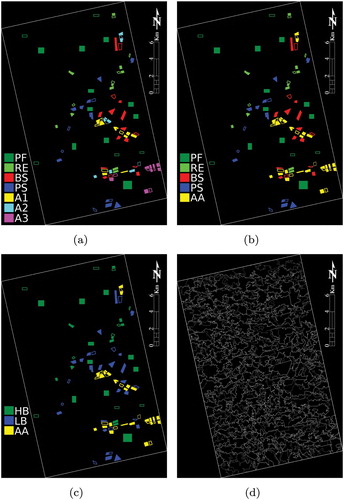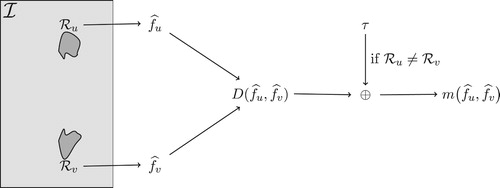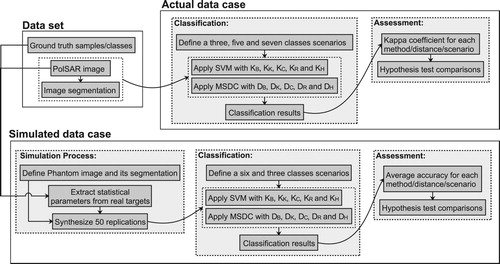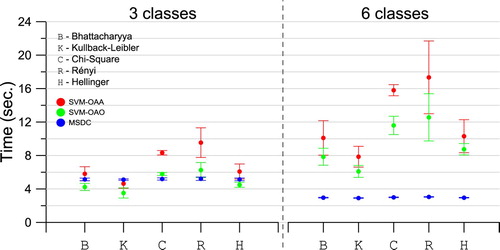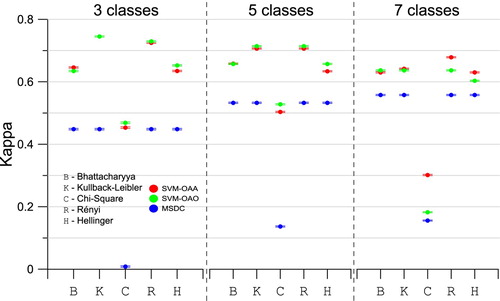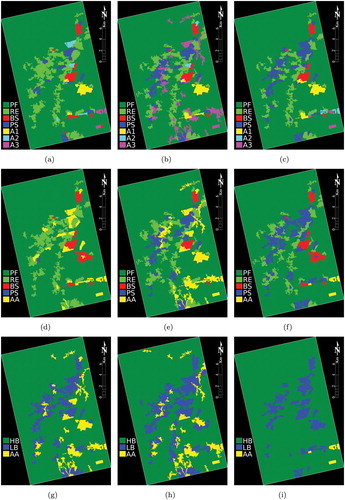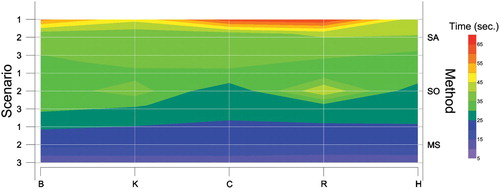Figures & data
Figure 3. The study area, actual PolSAR image and the spatial distribution of the LULC samples used in the study. (a) Study area location, (b) ALOS-PALSAR image in RGB color composition (HH, HV, VV) and (c) LULC samples.

Figure 4. Simulated data. (a) Phantom - Blocks, (b) Simulation example and (c) Mean covariance matrices (squares), and 44 perturbed covariance matrices (circles) in semilogarithmic scale.
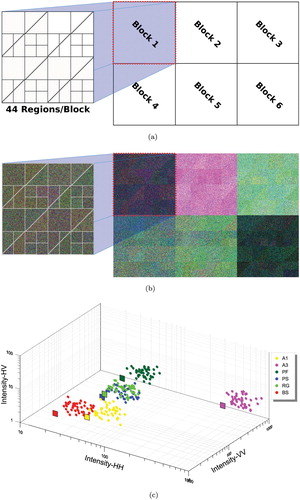
Figure 5. Simulated data. (a) Training samples – six classes case, (b) Ideal result for six classes, (c) Training samples – three classes case and (d) Ideal result for three classes.

Figure 6. The accuracy of classification results for the simulated data set. (a) Six classes classification and (b) Three classes classification.
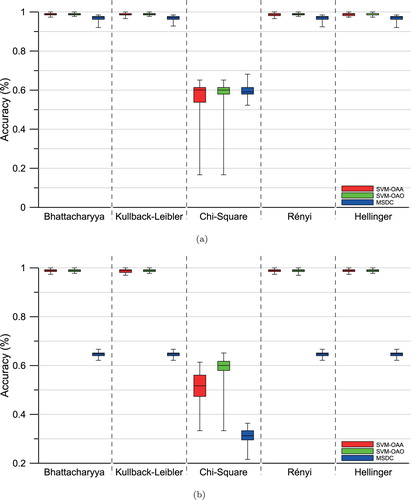
Table 1. Test statistic p-values for the t test that verifies that two classification techniques produce equivalent results. Values above (below) the diagonal correspond to the six (three, resp.) classes. Underlined values indicate equivalent coefficients at the 95% level.
Table 2. Summary of the land cover classes samples.
Figure 8. Spatial distribution of the samples on the different considered scenarios and the adopted segmentation. (a) Scenario 1, (b) Scenario 2, (c) Scenario 3 and (d) Segmentation.
